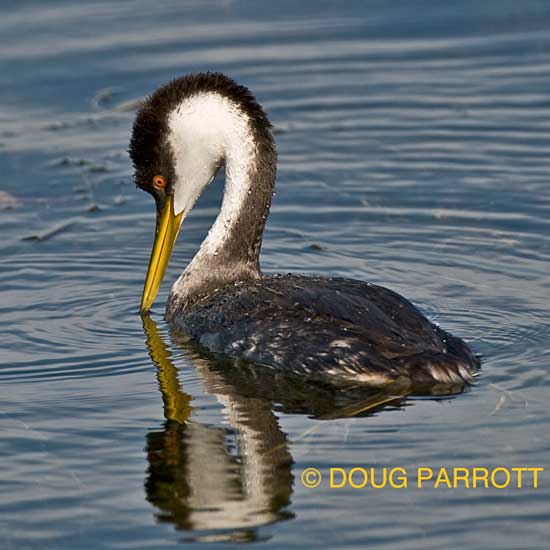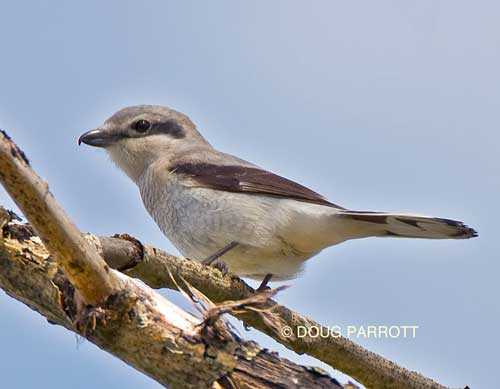She wrote:
A Northern Shrike (a bird that breeds on the tundra in the far north) and two Western Grebes (a species that has suffered a significant population crash in recent years) have settled in for the past few weeks.
The shrike is a songbird that uncharacteristically (for songbirds) hunts other animals. It can often be seen flying from small tree to tree in the open fields of the Fill. I've seen it catch large beetles and small mice. It tried to catch a chickadee the other day, but I think the chickadee got away.
The grebes have been hanging out near the crewhouse at Conibear. We don't get them every year, and it is extremely unusual to have two for so long. I thought the giant regatta that was held last weekend would drive them away, because there were crews putting in and taking out all day long, loud music, and lots of people, but the grebes just sailed out of the way and went on about their lives.
Here are her recent Blog posts:
Grace
November 12th, 2012
To see a Western Grebe floating serenely on the lake, its long white neck punctuated by the black comma of its head and nape, is to see grace itself come to life.
“Grace” is an odd word in our language. It comes from the Latin word gratis, meaning “a pleasing quality.” Over the centuries, as Latin became more vulgar and eventually turned into French, the “pleasing quality of grace” came to mean “elegance of form” or “beauty of movement.” Along its way toward elegance and beauty, though, grace took a turn toward good will and also came to mean “favor” or “gratitude.” That is why devout people say grace before a meal and also why they pray for grace from God.
For me, the Western Grebes who grace the waters of Union Bay embody all the definitions of the word. They fill my eyes with elegance and my soul with gratitude, whether they are fishing for minnows, or briefly coming together to swim side by side, or floating with necks curved into telephone cords of folds so they can tuck their bills into their backs for a nap.
To see them for yourself, you should walk out to the crewhouse at Conibear, where they hang out almost every day. They aren’t shy. If you walk slowly out onto the dock and make no sudden movement, in all likelihood, they will let you get close enough to see every feather.
In this world of chaos and confusion, they are a great gift to all who seek grace of any sort.
Not What Meets the Eye
October 25th, 2012
Like a wisp of gray fog, the Northern Shrike snagged itself onto a tree in the middle of Hunn Meadow East, silvery feathers ruffled slightly by the breeze. It surveyed the mowed grass, glancing up from time to time at the goldfinches that swirled in alarm over its head. I could hear it trilling to itself, like an opera star getting ready to perform.
Shrikes are robin-sized songbirds that nest in the empty lands of the Far North. They come to the Fill singly and rarely in spring and fall, but seldom stay for long. We don’t give them enough habitat to live on, I guess, and so after a few days, they move elsewhere.
Most songbirds chirp their way through life, feasting innocuously on seeds or insects. Not so shrikes. Shrikes are the opposite of innocuous. They prey on other birds and small animals, catching them on the fly and sticking them onto convenient twigs or brambles for future consumption. For this reason, shrikes are commonly called butcher birds. The equivalent of cows with fangs.
Beautiful but deadly — like nature itself.

No comments:
Post a Comment